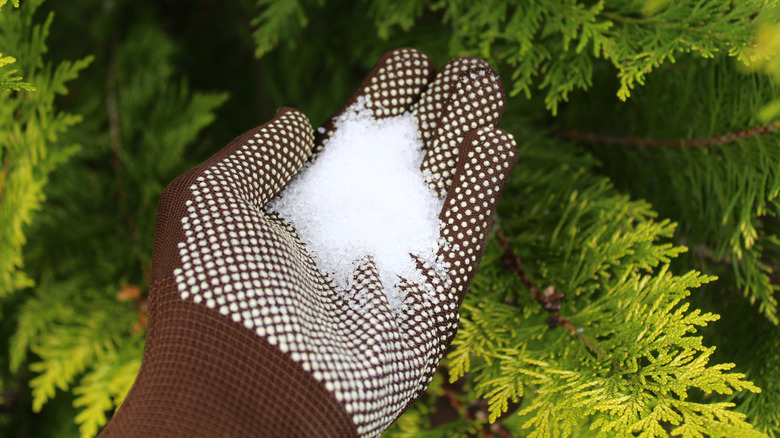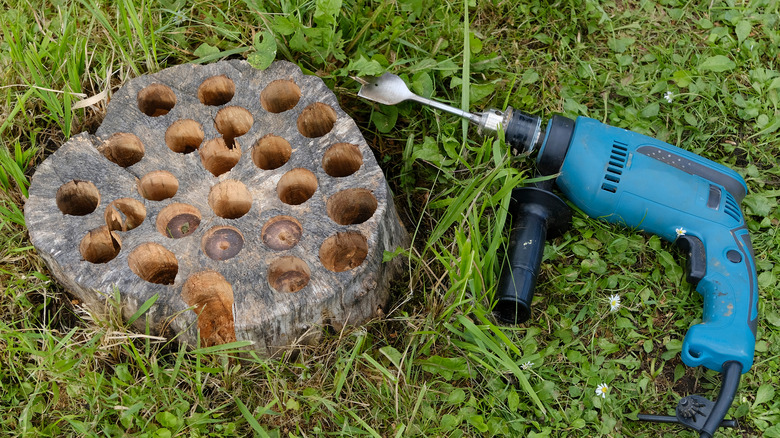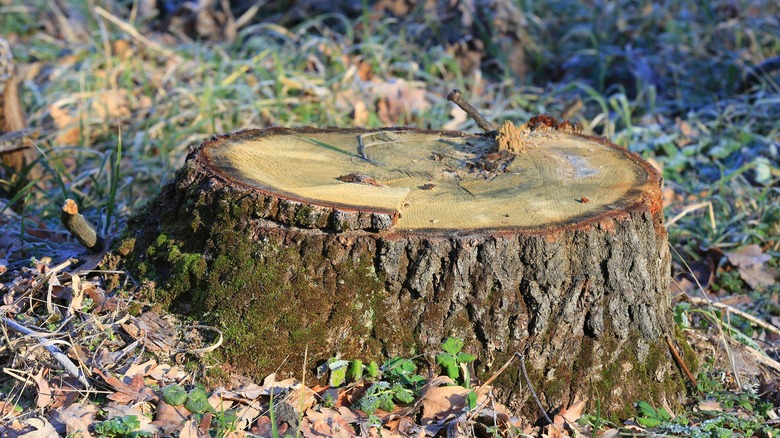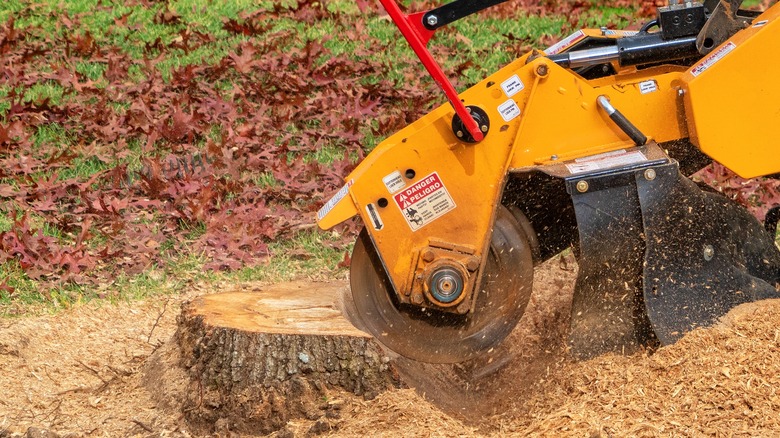Does Epsom Salt Really Work To Remove Tree Stumps?
So, you've had to fell a dying maple, or perhaps the old oak in your yard succumbed to a ferocious storm. Now you're left with an unsightly stump marring your yard's landscape. Tree stumps can detract from the overall appearance of your property, giving it an unkempt or incomplete look. Moreover, they pose tripping hazards, attract pests like termites or ants, or occupy valuable space that you want to use for your next outdoor update or renovation. Naturally, you're inclined to remove it. But therein lies the challenge. Removing tree stumps is no easy feat.
Tree roots, especially those from older trees, are often extensive underground systems. They tend to intertwine themselves with surrounding soil and structures, which makes lifting them out difficult. On top of that, the stumps themselves are often dense and robust, making it physically challenging to break them down or remove them. Other times, gardeners are deterred by some harsh chemical compounds required to break down a stump, as they can have adverse effects on natural environments.
For individuals facing this dilemma, bloggers and gardening aficionados have presented a tempting solution: using Epsom salt to remove a tree stump. However, before investing time and money into copious amounts of Epsom salt, let's explore whether this method holds any merit.
How do I use Epsom salt to remove a tree stump?
In order to use this method, begin by drilling holes into the top and sides of the tree stump. The holes need to be deep so that the Epsom salt can cover a large surface area of the stump. Then, fill each hole with salt — pro-tip: use a funnel to pour the salt into the holes. Once the holes are filled, coat the top of the stump with more Epsom salt. Ideally, the entire top of the stump is coated in white grains. In order to start the decomposition process, sprinkle the salt with a little bit of water, being careful not to wash away or dissolve the salt completely. Last, to shield the treated stump from the elements, cover it with a tarp or plastic sheet. Secure the sheeting with stakes or heavy objects to keep it in place.
Over time, you will notice signs of decay or tree death, such as wood softening or even fungal growth. As Epsom salt is absorbed, repeat the application to facilitate the decomposition process. Once the stump has sufficiently decayed (in other words, it has become brittle, or is easy to maneuver), you can break it apart to fully remove it. Architectural Digests estimates the entire process could take six months to a year.
What is the theory behind using Epsom salt for removing tree stumps?
What we know as Epsom salt is known as magnesium sulfate to chemists and biologists. Magnesium sulfate is hygroscopic, meaning it has the ability to absorb moisture from its surroundings. When applied to a tree stump, Epsom salt is thought to extract water out of the wood, effectively drying it out. By dehydrating the stump, Epsom salt creates an environment that is less hospitable to the survival of the stump and any remaining roots. Over time, this is believed to lead to the deterioration of the stump, making it easier to break apart and remove.
While magnesium and sulfur are both elements that are beneficial for the growth of plants, it is the fact that they are applied in excess that proves detrimental to the viability of the tree stump. The heightened presence of magnesium sulfate disrupts the balance required for the stump's sustained growth, contributing to its eventual decay.
Some might be concerned about the safety implications of using such substantial quantities of magnesium sulfate in their yard. However, it's worth noting that Epsom salt, within this context of stump removal, does not pose significant and widespread environmental risks. Magnesium sulfate is a naturally occurring compound that does not introduce harmful contaminants into the surrounding soil or water sources. Additionally, it is biodegradable, so any residual traces left behind after the decomposition process are unlikely to cause long-term harm to the ecosystem.
Does it actually work?
While the theory behind this method seems promising, its real-life effectiveness is inconsistent. For instance, YouTuber Homesteading DownUnder found that applying Epsom salt did not lead to the decay of a tree stump as expected, nor did it kill roots underground. Instead, he actually found new plant growth surrounding his stump in the weeks after applying Epsom salt. Another YouTuber, Plant Abundance, did see progress, but over the course of six weeks, the decay he observed was minimal, and his stump still seemed a long way away from becoming removable.
These results seem to be in line with what ICT Tree Service expects from using Epsom salt to remove tree stumps. They acknowledge that this technique can take years to yield noticeable results. This is likely due to a number of factors. For one, fresh, large, or particularly resilient tree species will require more time and effort to decompose. Moreover, depending on the depth of the roots, Epsom salt may have limited reach. Longer roots may remain intact and alive, which could have contributed to the results seen by Homesteading DownUnder. Furthermore, weather and climate play significant roles; excessive rainfall, for example, can dilute the salt, potentially hindering its efficacy.
Overall, it appears that there are numerous variables that are challenging to account for when employing this method. Given the unpredictable nature of stump removal using Epsom salt, individuals seeking a faster solution may find it more practical to opt for conventional stump removers.



